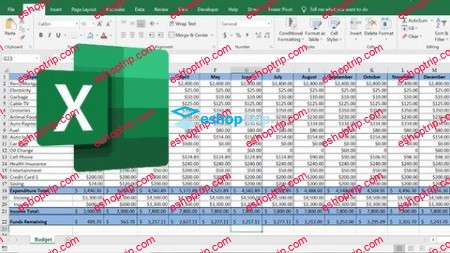MP4 | Video: h264, 1280×720 | Audio: AAC, 44.1 KHz
Language: English (US) | Size: 826.56 MB | Duration: 1h 53m
Learn how to build financial models in Excel and VBA for different financial topics
What you’ll learn
Build a Black-Scholes-Merton option pricing model in MS Excel
Build a Binomial option pricing model in MS Excel
Estimate the implied volatility of options using Goal Seek
Using the Solver function to optimize a portfolio of stocks
Build a spreadsheet to run a Monte Carlo Simulation for wealth planning
Build a spreadsheet to compute Value at Risk and Conditional VaR (Historical, Gaussian, Cornish Fisher)
How to optimize the liquidation of a trading position based on VaR and Trading Liquidity
Requirements
You need Microsoft Excel installed on your PC/laptop
You need some basic knowledge in Finance (e.g. call and put options) and Microsoft Excel
Description
Excel is an excellent tool for understanding the intricacies involved in financial modeling. The aim in each section of the course is to explain the implementation of the models using Excel.The models discussed in this course:1) Black-Scholes-Merton (BSM) Option Pricing ModelYou will learn to calculate the price of a European-style call and put option using the Black-Scholes-Merton option pricing model. This includes cases where the underlying stock pays dividend.After that, you will compute the Option Greeks: Delta, Gamma, Vega, Theta, and Rho for the call and put options.2) Binomial Option Pricing ModelUsing VBA, you will learn to create the calculator for a European-style call and put option using the binomial option pricing model, based on Cox-Ross-Rubinstein (CRR) model.3) Portfolio OptimizationYou will learn to use the Solver function to find the optimal asset allocation for a portfolio of stocks. You will learn to download the stock data and import into Excel, calculate the returns, variance, covariance and Sharpe ratios.4) Option Implied VolatilityYou will learn to use the Goal Seek function to find the implied volatility of a call and put option based on the market price of the options. 5) Value-at-Risk (VaR) and Conditional Value-at-Risk (CVar): Historical, Gaussian and Cornish-Fisher (NEW! Added on 4th June 2020)Using a selected stock, you will learn to compute the value-at-risk (VaR) and conditional value-at-risk (CVaR) using the historical VaR and historical CVaR, Gaussian VaR and Gaussian CVaR, and Cornish-Fisher VaR and Cornish-Fisher CVaR.6) Optimization of VaR and Trading Liquidity Risk: Unwinding a Position Optimally (NEW! Added on 4th June 2020)First, you will learn to calculate the cost of unwinding a position by considering the market risk exposure (measured by VaR) and the cost of liquidating the position (measured by the bid-ask spread). Then, you will determine the optimal liquidation period to minimize the market risk and cost of liquidation.To benefit from this course, it is advisable that you try building the models as you go through the videos.
Who this course is for
Those interested in financial modeling
Homepage
https://anonymz.com/?https://www.udemy.com/course/intro-to-quantitative-financial-modeling-in-excel/










